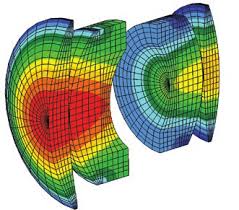SigFit is a powerful tool for optical-mechanical engineers, enabling the integration of mechanical analysis and optical analysis to study the behavior of light affected by mechanical perturbations. The software combines results from both fields, allowing for a more comprehensive understanding of how mechanical influences can affect the optical performance of systems.

Integration of Optical and Mechanical Analysis:
Understanding Mechanical Disturbances:
Human-readable Optical Performance Parameters:
Adaptive Control Simulation:
Monte Carlo Analysis for Variability:
Dynamic Response to Errors:
Broad Range of Analytical Functions:

SigFit is a versatile and powerful tool that enhances the design and analysis of optical-mechanical systems, offering an integrated approach to analyzing the effects of mechanical perturbations on optical performance. With capabilities such as adaptive control simulations, Monte Carlo analysis, and dynamic error responses, SigFit supports engineers in creating more reliable, efficient, and high-performance systems.